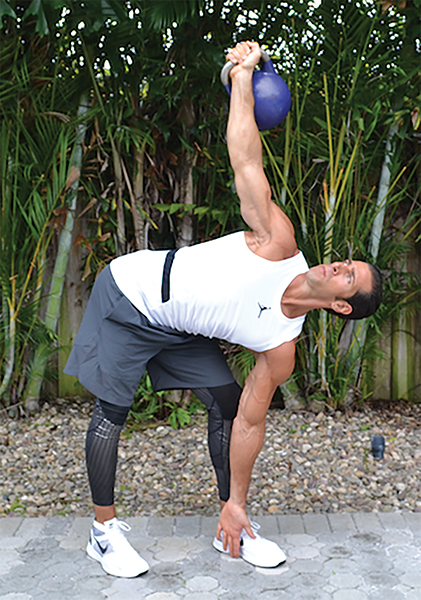“I have bad knees.”
“My lower back is killing me.”
“My shoulder always bothers me when I reach overhead.”
Any of these sound familiar? Know anyone who has said one if not more of these statements? What if I told you that there is a good chance the knees, lower back and shoulders aren’t the true root causes of the pain?

THE JOINT-BY-JOINT APPROACH
The joint-by-joint approach to the body was created by two of the most successful and knowledgeable men the fitness industry has ever seen — strength coach Mike Boyle and physical therapist Gray Cook.
The approach simply says this: The human body is stacked with alternating mobile and stable joints. Before I move any further, this is not to say that a “mobile joint” only requires mobility and a “stable joint” only requires stability. This does imply that the mobile joints that I am about to list require much more mobility than stability and vice versa.
Let’s take a look at the major joint systems of the body:
Foot (stable)
Ankle (mobile)
Knees (stable)
Hip (mobile)
Lumbar spine (stable)
Thoracic spine (mobile)
Scapula (stable)
Shoulder (mobile)
Elbow (stable)
Wrist (mobile)
THE IMPORTANCE OF JOINT-BY-JOINT
Think about your body like this: If a certain joint system does not have the requisite mobility, then it has to find a way to get it somewhere else, generally above or below that particular joint.
For example, let’s look at the hip. The hip is the connection between the upper and lower body. It should be able to move in multiple ways (forward/backward and side to side). If the hip does not have the mobility to work like it is intended to and it’s asked to do something that requires it be mobile, the body will have to compensate by getting that mobility either from the lower back or the knees.
Remember those individuals with “bad knees” and a painful lower back? There is a good chance that it is because their hips are too stiff and tight, so their knees and/or lower back are being asked to do things that they really weren’t intended to do. In other words, if the hip can’t move, the lumbar spine (lower back) will.
ASSESS YOURSELF
Take a moment and go through the joint list above. What hurts? A mobile joint? A stable joint? Multiple joints?
Generally you can look at it like this:
• Poor ankle mobility leads to knee pain.
• Poor hip mobility leads to lower back pain.
• Poor thoracic mobility leads to shoulder/neck pain.
This is not to say that the source of pain is never the problem, but there’s a good chance that there is something going on above or below the painful joint that is compensating. Without getting overly technical, the body is connected and works together.
So next time, instead of “I need to get my knee stronger,” you may just have to loosen up your ankles. Instead of masking low back pain with medicine and cortisone shots, you may have to look at getting your hip moving better.
This topic does run pretty deep, so please feel free to reach out to me for any additional questions, comments, etc., and I’ll be happy to help.
Reach Giovanni on Twitter @GiovanniRoselli and at his website, GiovanniRoselli.com.

